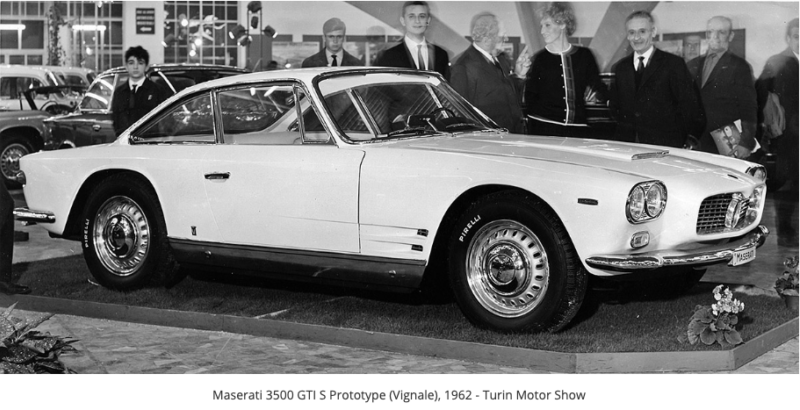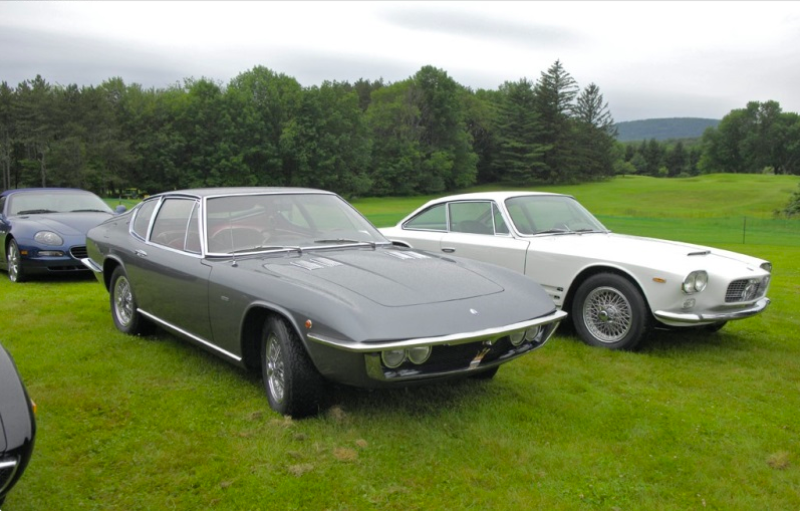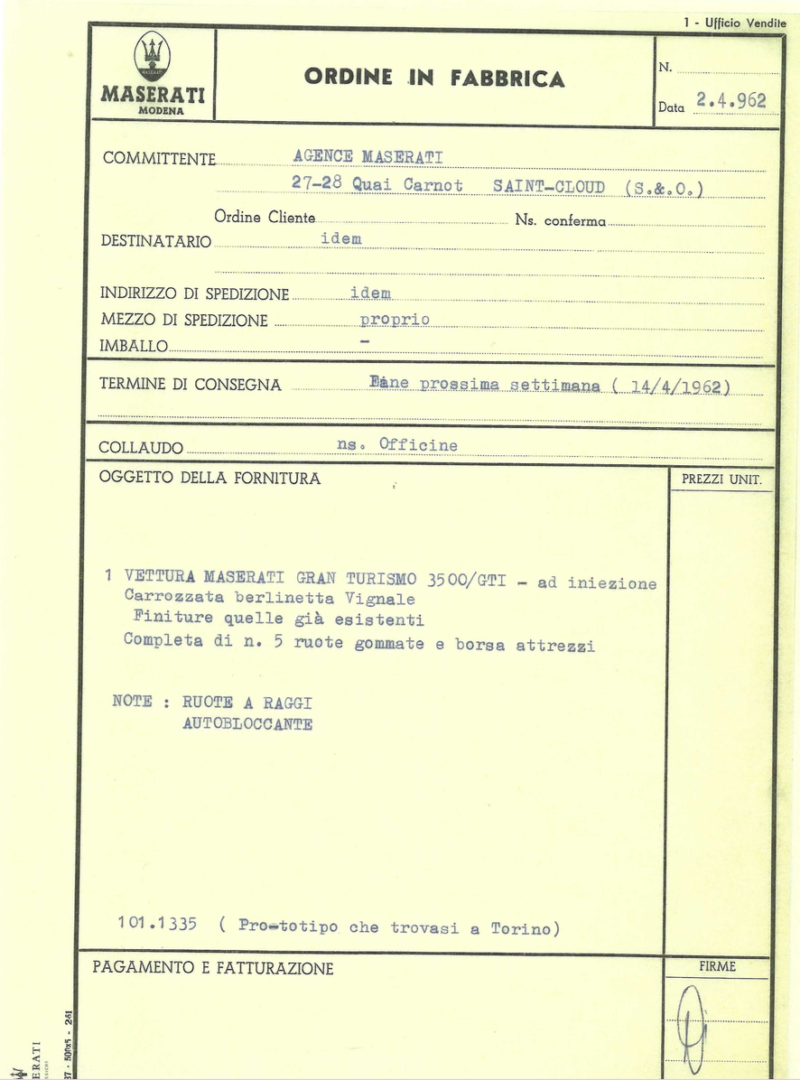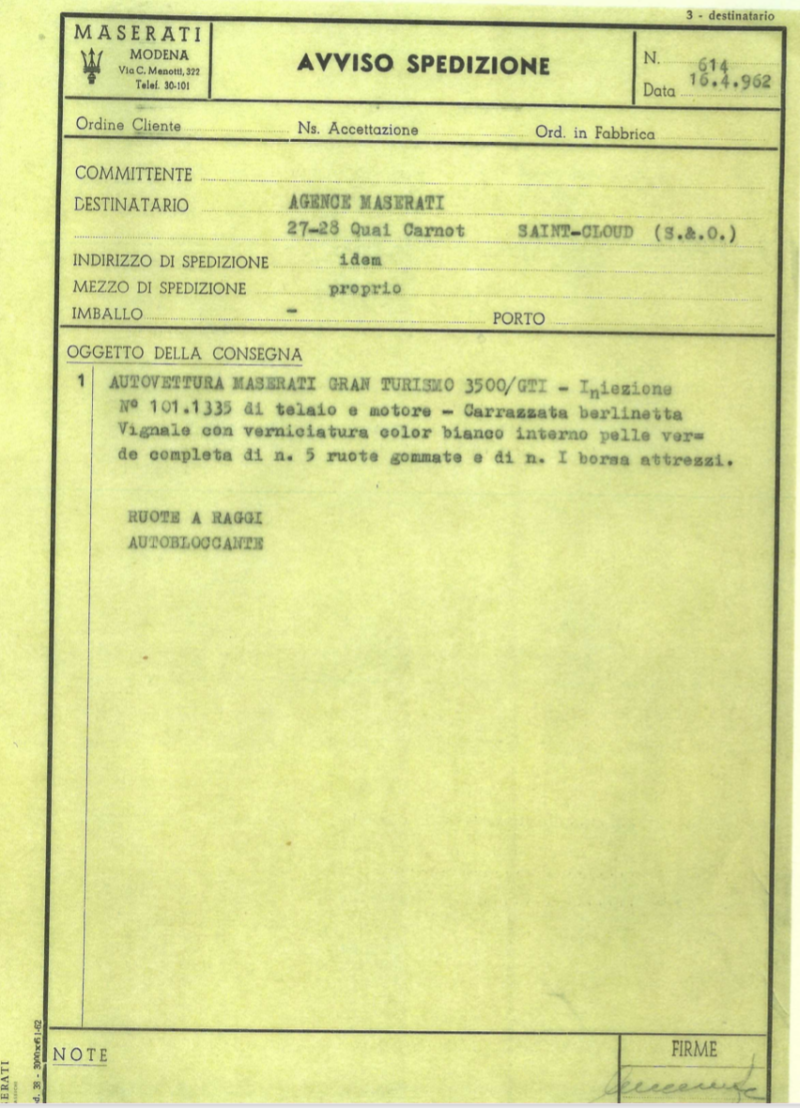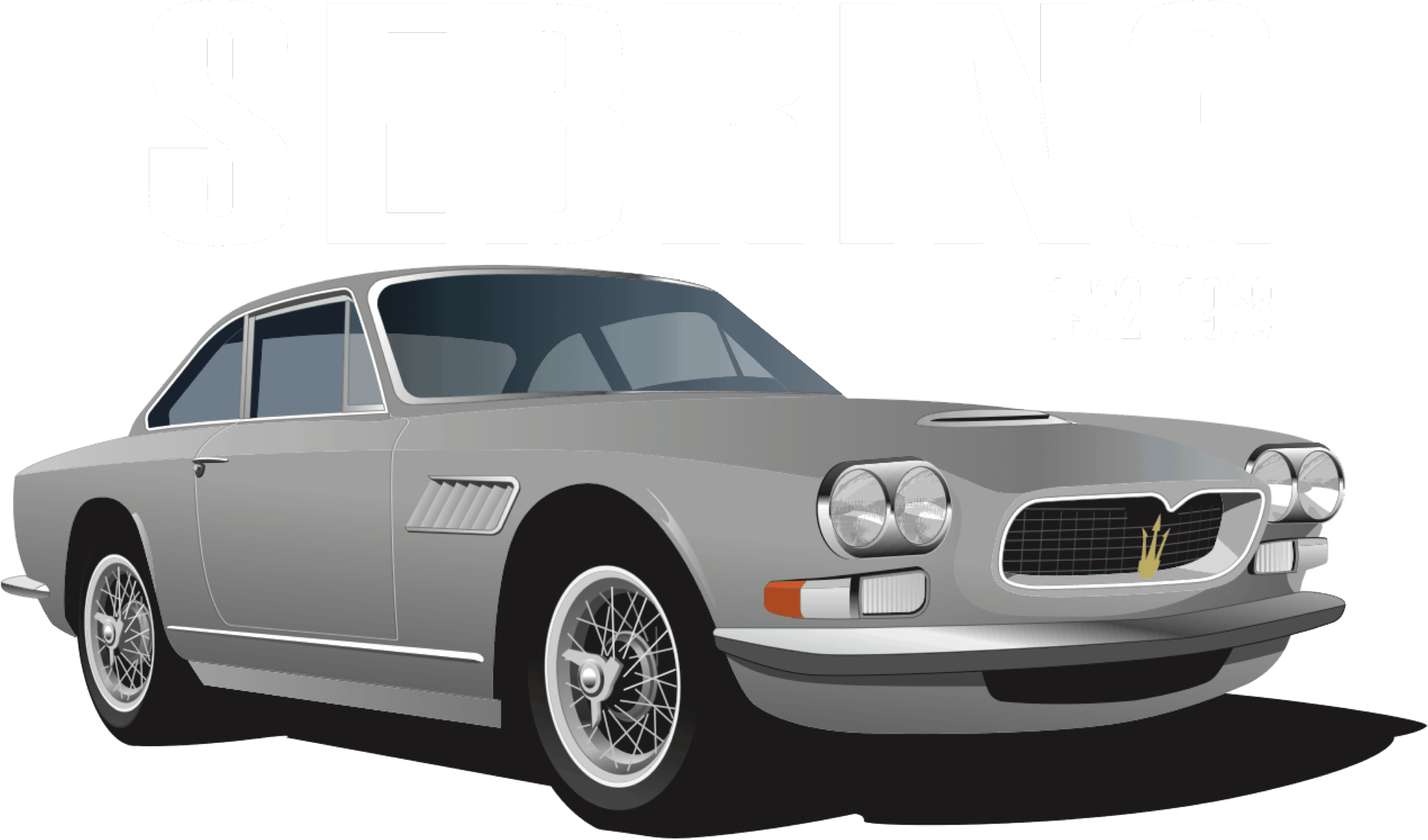
Two Sebring Prototypes
There were two Maserati Sebring prototypes built, reflecting styling cues for the Sebring Series I and Series II. One of these was first presented at the 1961 Torino Automobile Show. Later, it was Maserati's show car at the 1962 Paris Automobile Show.
The other prototype version, shown at the 1962 Geneva Motor show, was closer to how the Series I production version turned out.
The 1961 Torino car, AM101*1335*, was assembled using a Vignale spyder frame and probably the first fuel-injected engine. The same engine was used in production cars such as the 3500GT late in 1961 and of course, the Sebring and Mistral in 1963. So, the Sebring prototype was the first 6 cylinder engine designed for the street with fuel injection. The body panels were all free form, i.e., there was nothing used or penned from other production, limited production or one-off cars on this prototype.
The interior had influences from other Maseratis. The dials with instrument clusters within were taken from the 5000. The air/heat controls resemble the ones in the 3500GT Coupes and the Vignale Spyder.
AM101*1335* was produced for the 1961 Torino automobile show as Maserati's featured car to introduce the Sebring line. Subsequently, it was Maserati's show car in the 1962 automobile show in Paris. The car was sold to the first owner who resided in Paris shortly after the show. There is not too much paperwork chronicling the ownership. The car remained in Europe and changed hands three times before an American Maserati enthusiast purchased it from a dealer in Belgium in 2007.

In 2012, a restoration was begun at Redline Restorations in Connecticut, with a body-off restoration performed without disturbing the interior. The prototype was first inspected for correct shut lines, body stance and a thorough inspection for any signs of rust or corrosion. After the inspection, it was noted that body panel measurements were very inconsistent. This was usually the result of a car being commissioned as a prototype. Panels were corrected for proper straightness with corrosion and pitting properly repaired and correct paint colour applied.
The dimensions of this prototype car are quite different those of the Sebring Series I and II. The roofline is approximately 6 inches lower, and the width is probably 2 to 3 inches wider at the front fenders. The nose protrudes a few inches more than the Series I and II, which gives the car a very aggressive look. The Series I and II took different parts of the prototype to build the production cars. The Series II incorporated the headlight assembly from the prototype. At the same time, the Series I used lower vents on the front fenders behind the wheel. The Series II front fender is more similar to the prototype than the Series I. Other subtle differences can be seen when comparing all three.

